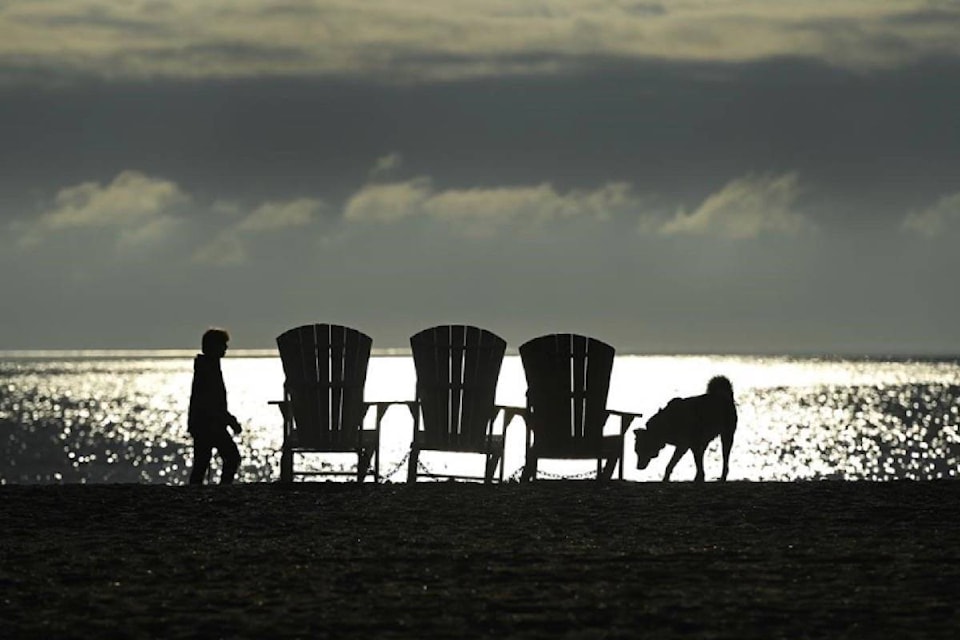Tougher restrictions are coming to Winnipeg as Manitoba’s COVID-19 caseload ticks upward, while Ontario’s premier is urging gym enthusiasts in hard-hit regions not to venture elsewhere to work out.
Manitoba reported a record-high 173 new COVID-19 infections on Thursday and currently has a per-capita active case count second only to Quebec. It marked the third day in a row that Manitoba had a record number of positive tests.
The percentage of people testing positive has also jumped sharply in recent days — to 4.9 per cent provincewide and 5.8 per cent in Winnipeg. Canada’s national positivity rate is 2.1.
Manitoba chief medical officer Dr. Brent Roussin said he is looking at imposing widespread capacity limits in public places across many sectors as early as Friday.
“We have multiple examples of people just not following the fundamentals and not following the rules,” he said.
Ontario reported 783 new COVID-19 infections on Thursday along with five additional deaths.
On Saturday, the province imposed new restrictions in three hotspots: Ottawa, Toronto and Peel Region, west of Toronto.
Indoor dining at restaurants and bars is prohibited. Gyms, movie theatres and casinos are closed. The measures are to last at least 28 days.
Premier Doug Ford said Thursday that he’s heard of people going outside the hard-hit zones to use gyms where restrictions are looser.
“Folks, I’ve just got to ask you try to work out at home,” he said. “Big fitness clubs are saying they don’t want you to come there.”
Asked if that behaviour could lead to more widespread restrictions, Ford said: “If the spread continues and it goes into other regions, the answer is yes.”
Ford said York Region, north of Toronto, is “teetering” when asked if that area could face more restrictions.
Quebec, meanwhile, is reporting 969 new COVID-19 cases and eight more deaths in the past 24 hours.
Health officials in the province reported another 22 deaths that they say occurred at earlier dates.
Tightened restrictions imposed earlier this month in the greater Montreal and Quebec City areas, as well as the Chaudiere-Appalaches region south of the provincial capital, are to last until at least Oct. 28.
But Premier Francois Legault said it’s “likely” some of the stricter rules will last longer in those regions.
Bars, casinos, concert halls, cinemas, museums and libraries are shuttered and restaurants are limited to takeout.
Private gatherings are prohibited and people cannot have any visitors from another address at their homes, with few exceptions.
Legault said he hopes Quebecers will be able to see their friends and families at Christmas.
“It’s too early to say what form that might take, but it won’t be large gatherings.”
Legault added Halloween is a go for trick-or-treaters, as long as children stay with the people they live with. Parties, however, are out.
In Ottawa, Indigenous Services Minister Marc Miller said the government knows of 209 active COVID-19 cases in Indigenous communities — the highest figure to date.
Miller said that number may seem small in the context of 20,000 active cases nationally, but he called it “alarming.”
“Every active case that starts spreading in a community requires a huge mobilization that (it) wouldn’t necessarily in an urban centre,” he said. “So there is a very, real and present logistical challenge.”
Heading into winter, 144 mobile structures have been procured for communities where overcrowding is a concern. Miller said they have inserts that can provide warmth down to -40 C.
“It’s not obviously ideal — it’s not even ideal during the summer — but we are moving to ensure that we do have the capacity to deal with those acute situations.”
Miller noted Indigenous communities in the United States have been hit about three and a half times harder than their non-Indigenous counterparts. But in Canada, the COVID-19 rate during the first wave was a third of that of non-Indigenous Canadians.
Alberta reported 244 new COVID-19 cases on Thursday, about on par with recent days. More than half of the province’s 2,738 active infections are in Edmonton.
A total of 46 patients, 38 staff and five visitors have tested positive in connection with outbreaks at Foothills Medical Centre, Calgary’s biggest hospital. Eleven patients have died.
B.C. recorded its first confirmed case of multisystem inflammatory syndrome in a child after antibody testing showed evidence of COVID-19.
Provincial health officer Dr. Bonnie Henry said the child, who is under the age of five, has since recovered.
She made the announcement while reporting 142 new cases of COVID-19 and no additional deaths at a briefing on Thursday.
This report by The Canadian Press was first published Oct. 15, 2020.
